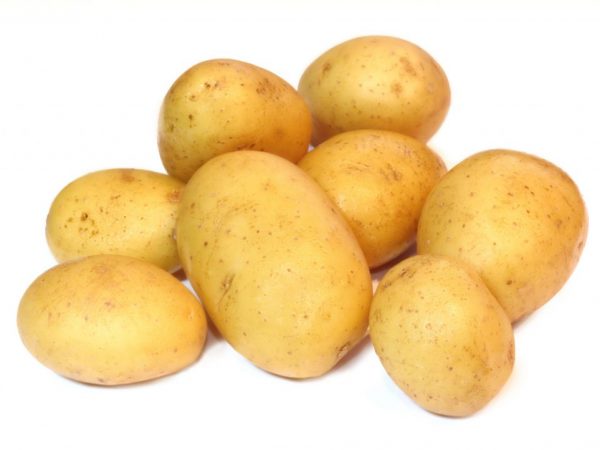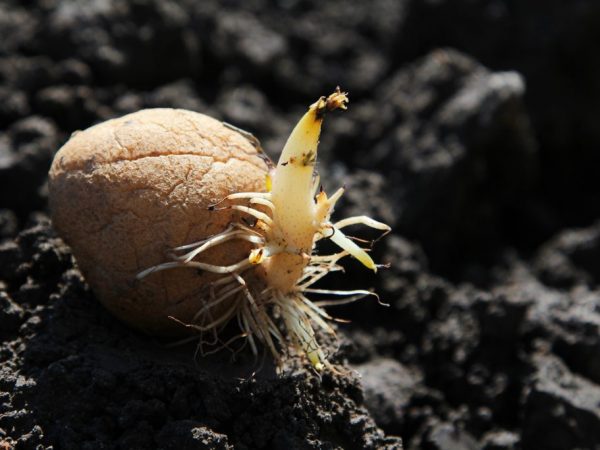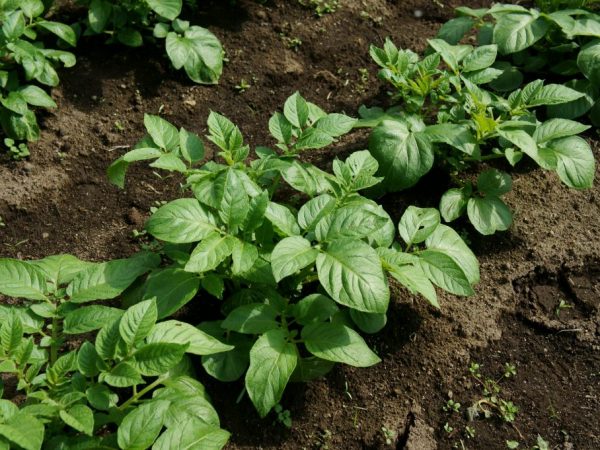Characteristics of Jelly potatoes
There are many types of potatoes, they all differ in planting method, weight, each needs special care. Nevertheless, it is worth highlighting Jelly among all types. It is often grown not only by professional farmers, but also by ordinary people who have a small vegetable garden. It is versatile, grown without unnecessary complications, and as a result, the potatoes come out quite large in size. Like other varieties, it has a few grooming secrets that anyone who wants to plant Jelly potatoes should know.

Characteristics of Jelly potatoes
Variety characteristic
The Jelly potato variety appeared back in 2005 in Russia, and, accordingly, is ideal for chernozem soils throughout the territory of this country as well as Belarus and Ukraine. It will grow comfortably not only in the Russian Federation, but also on the lands of Ukraine and Belarus, because the composition of the soil is similar and cultivation in these territories is especially successful and prolific. The species is mid-season and table, as they say "for people", so that it is the most convenient for growing. It's safe to say that it adapts to any type of soil.
Dignity
The Jelly potato variety has been popular for a long time. Since its inception, there have been various rumors about how to plant it, how to care for it. All these rumors are passed from one person to another, and it seems that it is very difficult to grow this culture. It is worth finally refuting or confirming these rumors and highlighting the advantages and disadvantages of such a tuberous plant.
The advantages of Jelly include the following facts:
- This type of tuberous can be planted on all types of soils. It has the function of versatility, since it does not have special preferences in this or that type of land. So it can be safely planted in different parts of the world, with different soils, and it will bear the same big and healthy fruits.
- Virus resistance. In comparison with other types of tuberous, it is well protected from viruses and can resist them when other subspecies are already infected with viruses.
- It tolerates transportation well. If you have a mission to transport the tubers somewhere after harvesting, then you can be calm, because it has some protective qualities and after long transportation the taste or appearance will not change.
- Has a long shelf life. It can lie in your basement all winter and be just as strong and tasty. This is another of the positive features of this plant.
- Yield stability. Some species can be very productive one year, and already in the second, absolutely the opposite. It's not like that with Jelly. He has a stable yield.
Despite the enormous advantages of this variety, there are a number of disadvantages.He, of course, no more than the "pluses" of Jelly, but they are, and if you intend to plant this variety, then you should be familiar with them.
disadvantages
Disadvantages of Jelly Potatoes:
- Needs systematic fertilization. There are species where you don't have to fertilize and the fruit will be pretty good. After planting this variety, be aware that you need to fertilize it periodically for normal development.
- Change of landing site. Almost every type of potato has such a drawback, because the land is exhausted, after harvesting the potatoes and all its fertilizing qualities, it has already given up. If this variety is planted in the same place for several years in a row, there is a risk that fertility will clearly decrease.
- Vulnerable to diseases such as late blight. Despite the high percentage of disease resistance, it remains vulnerable to late blight outbreaks. In order for this not to happen, you need to pre-process it.
There are very few disadvantages. Since this type of potato is very versatile and suitable for any type of soil, there are no big problems, respectively.
Features of planting potatoes

The tubers are planted in warm ground
For planting, the soil must reach an appropriate temperature of about 7-10 degrees, the ideal temperature in order to begin the process of planting the tubers.
Planting, as usual, takes place in rows, they are more convenient for both planting and harvesting. Since the Jelly bush is semi-spreading, the distance between the rows should be made large.
The characteristics of the Jelly potato allow you to start planting it, taking into account the fact that after 90 days it will be possible to harvest. But it is impossible to predict the weather conditions, so if there are still frosts after planting, it is recommended to pile up the ground, or fill it up.
The landing site plays a huge role, because it should be spacious. If there are too many trees present to cast shade, the risk of disease will increase.
Soil preparation
The soil plays out, not a subsequent role in the formation of the future harvest of such a crop, so this issue needs to be approached seriously. Before planting, be sure to treat the soil with a cultivator to get rid of the remaining plants in the soil.
Best of all, the Jelly species grows on soils with the presence of sand, which are saturated with mineral and nutrients. It stimulates the growth of potatoes, if before that, on this soil were grown:
- beans;
- peas;
- lentils;
- radish.
And other, similar products, which increase the ability of the soil to provide the potatoes with the necessary substances for growth and development.
The temperature of the ground before planting is important, the soil must be sufficiently warm. If you plan to plant at a deeper distance, then you need the temperature to be no lower than 9-10 degrees.
Potato planting process
Planting potatoes of the Jelly type takes place, traditionally, in the spring (a detailed description of the step-by-step process can be easily found on any gardening site). It is important to observe the distance between the rows in order to give then space for the growth of the bush, not less than 74 centimeters. Planting should be carried out in good weather conditions, because if it is rainy weather, then this can also negatively affect further growth.

The bush needs a lot of space
The planting process for potatoes of any variety is similar. Both the preparation of the seeds and the cultivation of the land. It stands out only in that for each species it is necessary to observe its own distance, depending on the latitude of the bush. Jelly potatoes need a lot of space to develop later.
Potato care
Hilling can be attributed to caring for potatoes. This process has long been familiar to all farmers and gardeners (if not, you can find a description on the Internet). It is needed if the potato forms tubers on the lateral shoots from the roots. It is done several times, depending on the need, more can be done.
And also an important step in caring for potatoes is the prevention of Colorado beetles. Everyone's main association with potato pests is the Colorado potato beetle. It is necessary from time to time to monitor their presence on the potatoes and spray.
Watering
It would seem that there is nothing important in watering potatoes. Some do not even water their potatoes, relying solely on rain. But do not do like such people, it is boring to water the potatoes. Watering does not depend on the variety, so the Jelly variety has no particular preferences. But he doesn't really need him, so for lazy farmers this is an ideal option, sometimes you can forget about him and hope for rainy weather.
Fertilizers
A common question is still the question of whether it is worth fertilizing an already prolific variety? If the soil is not sufficiently endowed with natural fertilizers, then you can add mineral or organic fertilizers to the soil. But it is worth considering that an excess of nitrogen fertilizers leads to consequences, namely, it increases the growing season.
Since most viruses (except late blight) are not scary for the Jelly potato variety, then for prevention you can use the following drugs:
- cuproxate;
- dotamine M-45;
- gave birth to.
These preparations contain a lot of chemicals, so you need to carefully and correctly fertilize the plants. Observe the safety rules when spraying!
Pest control
Particular attention should be paid to pest control. There are more and more of them every year. The topic of Colorado beetles has already been raised above, so you definitely need to pay attention to this again. And there are also many other pests, besides the Colorado potato beetle, which can do twice as much damage to potatoes. It is worth sprinkling potatoes for its normal development.
Conclusion
Jelly potatoes are the leader among other varieties, because they have a number of advantages, which are much more than disadvantages, and therefore are very popular among farmers. It looks like a standard potato, as evidenced by the characteristic: its weight is 85–130 grams, the starch content is 13.4–17.8%, the ripening period is medium early. Nevertheless, this variety conquered everyone with its virus resistance, because it has a high yield level and its marketability (because despite various tests, it remains a good look and a pleasant taste).
And also this variety is easy to care for, because you do not need to apply special efforts in order to care for it. He is not picky, and you should not look after him 24 hours a day, because under normal weather conditions, under normal, systematic (sometimes watering and spraying from pests) care, potatoes grow normally and bear great large fruits.


